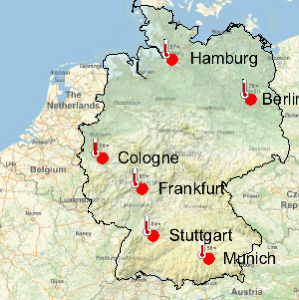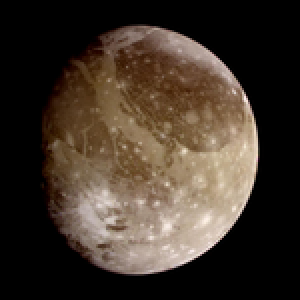列举 PCB 结构并通过 EntityStore 分享
多氯联苯(PCB)是化学式为  的有机化合物. PCB 原先被用于包括变压器在内的多种工业用途中. 这里展示了在实体库中作为自定义实体生成和存储的所有可能多氯联苯(PCB).
的有机化合物. PCB 原先被用于包括变压器在内的多种工业用途中. 这里展示了在实体库中作为自定义实体生成和存储的所有可能多氯联苯(PCB).
ChemicalData 已经包含了 PCB 支架和二苯基(通常称之为“联二苯”).
In[1]:=
Entity["Chemical", "Biphenyl"]["ColorStructureDiagram"]Out[1]=

ChemicalData 还包含了特定的 PCB 分子的同源物.
In[2]:=
Entity["Chemical", "PCB"][
EntityProperty["Chemical", "ColorStructureDiagram"]]Out[2]=

一般的 PCB 结构包含了 10 个位次,用 “X” 进行标记. 为获取从单氯到十氯的所有可能衍生物(即同源物),必须以所有可能的方式在这 10 个位次与氯取代基相连接. 在此,从预先定义的 CloudObject 中导入表示一般结构的 "MOL" 格式.
In[3]:=

molString = CloudGet[CloudObject[
"https://www.wolframcloud.com/objects/user-722de5bb-ef39-4cbd-\
999d-546c888892d6/PCB_scaffold"]][[2]];In[4]:=
ImportString[molString, "MOL"]Out[4]=

用一些基本的群理论,我们可以列举所有 PCB 结构. 出发点是整个支架的基本对称属性,表示为一个置换群.
In[5]:=

biphenylSymmetry =
PermutationGroup[{Cycles[{{6, 10}, {7, 9}}],
Cycles[{{1, 5}, {2, 4}}],
Cycles[{{1, 6}, {2, 7}, {3, 8}, {4, 9}, {5, 10}}]}];依据 Pólya 计数定理构成循环指标多项式,并通过处理其系数获得 210 种同源物(包括未被取代的碳水结构,由于其缺少氯并不属于 PCB).
In[6]:=
ci = Factor[
CycleIndexPolynomial[biphenylSymmetry, Array[Subscript[x, #] &, 4]]]Out[6]=
In[7]:=
Total[CoefficientList[Expand[ci /. Subscript[x, i_] -> (x^i + 1)], x]]Out[7]=
在用简单的字符串替代重新命名位次的位置后,生成了全部 209 个 IUPAC 适用名称.
In[8]:=

conPos = Flatten[(PositionIndex /@
First /@
GroupOrbits[biphenylSymmetry, Permutations[#],
Permute]) & /@ (LowerTriangularize[
ConstantArray["Cl", {10, 10}]] /. 0 -> "H")] /.
Thread[Range[10] -> {"2", "3", "4", "5", "6", "2'", "3'", "4'",
"5'", "6'"}];In[9]:=

(names = Flatten[{StringJoin[Riffle[Sort[#["Cl"]], ","]] <>
"-" <> (Length[#["Cl"]] /.
Thread[Range[10] -> {"Chloro", "Dichloro", "Trichloro",
"Tetrachloro", "Pentachloro", "Hexachloro",
"Heptachloro", "Octachloro", "Nonachloro",
"Decachloro"}]) <> "biphenyl"} & /@ conPos] /.
"2,2',3,3',4,4',5,5',6,6'-Decachlorobiphenyl" ->
"Decachlorobiphenyl") // ShortOut[9]//Short=
以相同次序,可以详细生成所有同源物的结构.
In[10]:=

PCBstruct =
ImportString[
StringReplacePart[molString, #, StringPosition[molString, "X"]],
"MOL"] & /@
Flatten[(First /@
GroupOrbits[biphenylSymmetry, Permutations[#],
Permute]) & /@ (LowerTriangularize[
ConstantArray["Cl", {10, 10}]] /. 0 -> "H"), 1];In[11]:=
TextGrid[Transpose[{names, PCBstruct}] // Take[#, 2] &,
Dividers -> All]Out[11]=

为包括关于同源物更加详细的属性,从一个预先计算的 CloudObject 将 PCB 作为数据集导入.
In[12]:=

imp = CloudGet[CloudObject[
"https://www.wolframcloud.com/objects/user-722de5bb-ef39-4cbd-\
999d-546c888892d6/PCB_congeners_propertylist"]]; In[13]:=
TextGrid[Take[imp, 5], Background -> {Automatic, {LightBlue}},
Dividers -> All]Out[13]=

将导入的数据和以前计算的结构和名称相结合.
In[14]:=

TextGrid[(PCBdata =
SortBy[MapThread[
Flatten[{#1,
Pick[imp[[3 ;;]], imp[[3 ;;, 1]], #2]}] &, {PCBstruct,
names}], #[[3]] &]) // Take[#, 2] &, Dividers -> All]Out[14]=

对这些 PCB 结构创建自定义实体库.
显示完整的 Wolfram 语言输入
In[18]:=

store = EntityStore[
"PCB" -> <|
"Label" -> "polychlorinated biphenyl",
"LabelPlural" -> "polychlorinated biphenyls",
"Entities" -> entities,
"Properties" -> properties,
"EntityClasses" -> classes
|>]Out[18]=

注册该部分存储.
In[19]:=
PrependTo[$EntityStores, store];通过调用随机实体测试该实体存储.
In[20]:=
EntityValue[RandomEntity["PCB"], "PropertyAssociation"]Out[20]=

为使所有用户自定义实体可以在未来会话和公开应用中使用,将实体存储写到 CloudObject.
In[21]:=
CloudPut[store, "PCB_entity_store", Permissions -> "Public"]

































